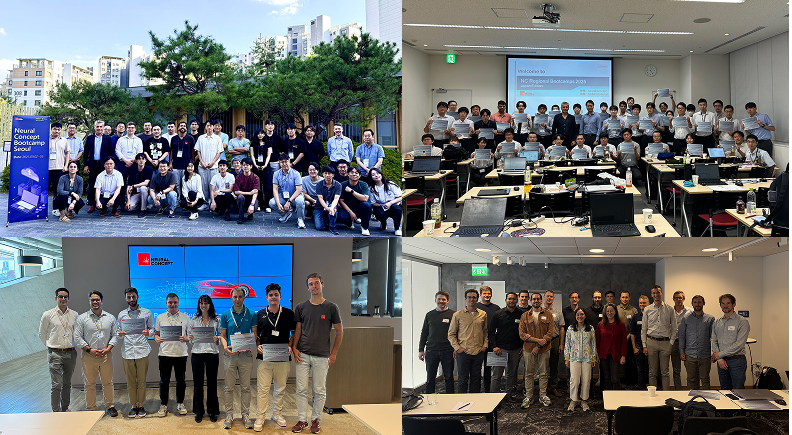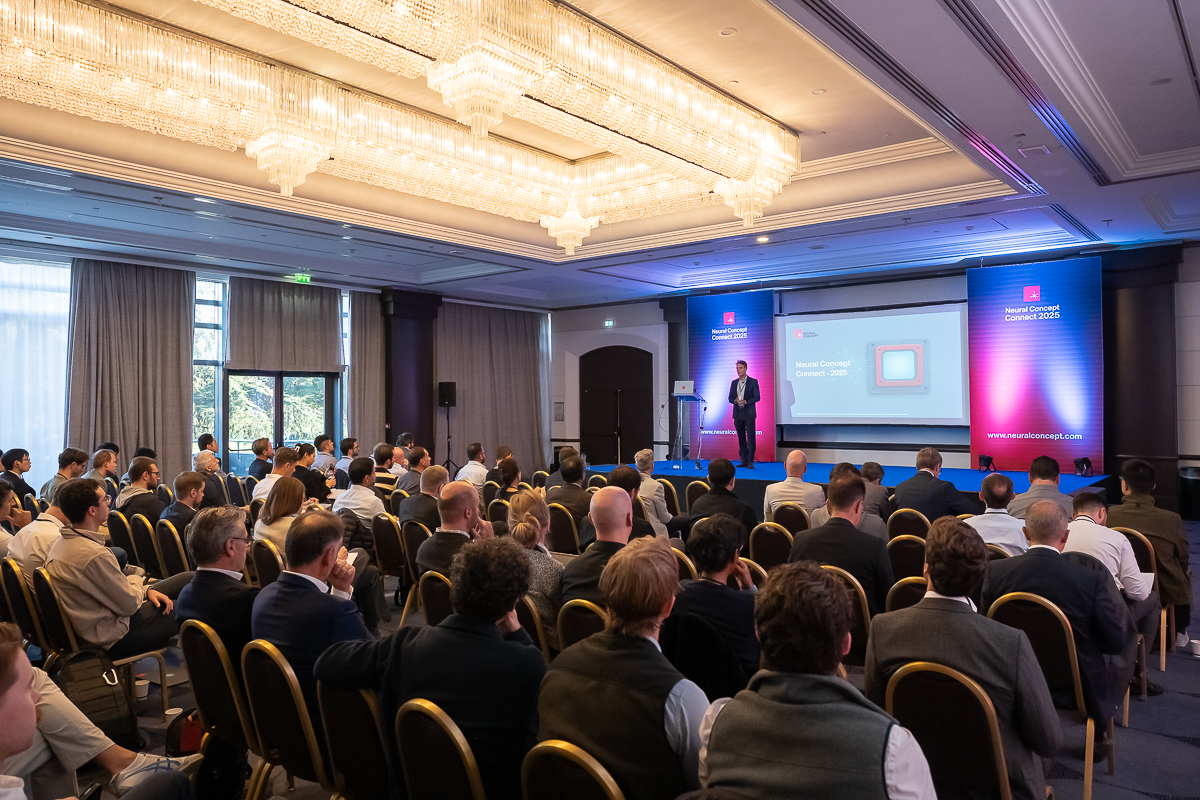AI in Engineering: Applications, Key Benefits, and Future Trends

Artificial intelligence (AI) is revolutionizing many fields, including engineering. AI in engineering helps organizations analyze and optimize the behavior of complex systems. In this article, we envision high-end AI for engineering systems ranging from automotive components to aircraft or even for satellite design.
A recent branch of AI is Machine Learning (ML). Within ML models, deep learning algorithms based on layered neural networks and specific mathematical filters have proven their value in the last few years since the end of the infamous "AI Winter."
AI systems are now unwrapped from the academic box. They can be called "AI solutions," i.e., moving beyond the proof-of-concept stage to the realistic deployment and application of artificial intelligence and autonomous systems in everyday engineering situations.
Those practical cases of AI in engineering are attracting the interest of major global corporations in the automotive and aerospace industries as well as civil engineering, energy, and naval construction companies.
To name a few, testimonials such as our collaboration with Bosch or with Airbus show that global leaders are at the forefront of AI engineering.

Follow us in the article to find other exciting examples of AI in engineering.
Examples of AI in Engineering
Artificial Intelligence Engineering is a new branch of software engineering that has taken the industry sector by storm.
The revolution was possible thanks to the advancement of statistical analysis, specifically deep neural networks, and the considerable availability of datasets created by generations of engineers making AI engineering a very active and productive branch.
What are ML Algorithms
ML algorithms enable computers to learn from data and make predictions or decisions without human intervention.
Data scientists are important in designing, training, and fine-tuning these algorithms.
Autonomous Systems and More
Autonomous systems are the first application of AI in engineering and computer vision systems that come to mind. Autonomous systems powered by AI enable self-driving cars to navigate complex environments, make real-time decisions, and improve safety by recognizing pedestrians or other vehicles.
3D CAD recognition with Machine Learning and Convolutional Neural Networks a the high-end application of artificial intelligence, which we will describe more in detail in the rest of the article, together with more general considerations and applications of AI in engineering.
Applications of Artificial Intelligence and Machine Learning in Engineering
We will show how AI engineers helped their companies to design better and faster with AI-generated product design.
Automotive AI Engineering Practice- in Design and Manufacturing
Use cases from AI in automotive industry and other sectors show how Machine Learning models enhance performance, optimize energy efficiency, and predict maintenance needs.
Use Case - Automotive Engineering Practices - from Design to Manufacturing
Car manufacturers can leverage AI systems with machine learning models trained on datasets of existing vehicle shapes.
A basic question is, what aerodynamic performance can be expected from a design change?
By aligning design modifications with AI predictions, manufacturers can assess how shape alterations affect aerodynamic efficiency. This approach allows for the development of optimized shapes that enhance performance. Manufacturers can then select and refine the best design options with human expertise, validating the results through traditional testing.

Use Case - Aerospace Design
The application of AI in Aerospace Design can be shown through several use cases of AI in engineering.
In 2019, Neural Concept applied Deep Learning to aircraft aerodynamics with Airbus.
Using Neural Concept Shape (NCS) as a surrogate for Computer-Aided Engineering, Airbus reduced the time to predict the pressure field on the external body of airplanes from one hour down to 30 ms. Thus, the machine learning techniques accelerated computational processes over 10,000 times!
Use Case - Naval Engineering
SP80 is a group of engineers and students from EPFL on Geneva Lake in Switzerland. They are dedicated to constructing a boat to achieve speeds of 150 km/h with wind power only.
Conventional sailing principles had to be reexamined to reach this ambitious goal.
Traditional sailboat foils are limited to speeds of about 100 km/h due to cavitation. At these high speeds, liquid water becomes unavoidable, converting into vapor, resulting in significant instabilities that hinder further acceleration of the boat.

Benefits of AI in Engineering
We will shortly review some of the benefits of AI in engineering.
Enhanced Design Optimization
AI in engineering enables faster and more efficient exploration of product design configurations i.e. of the "design space". This space can be explored either manually or automatically, generating optimized solutions satisfying demanding constraints (on shape, material etc.) and objectives on KPIs such as weight, durability, or aerodynamic performance to name a few.
This fast exploration approach via AI in engineering accelerates innovation by reducing traditional trial-and-error manual design iterations and represents and evolutionary step in engineering practices.
Improved Decision-Making
AI systems provide data-driven insights through predictive analytics. AI engineers can make more informed decisions or share their findings interactively during meetings with other teams.
Cost Reduction and Risk Mitigation
AI reduces project costs by identifying inefficiencies, predicting failures, and optimizing resource use. It also helps mitigate risks by simulating various scenarios and providing early warnings about potential issues in the design and manufacturing process.
Future Trends of AI in Engineering
We will discuss four AI trends in Engineering: AI-Driven Generative Design, Integration with IoT and Digital Twins, and AI-Augmented Engineering Collaboration.
AI-Driven Generative Design
Generative design uses AI algorithms to create diverse design solutions based on parameters like materials and performance goals. Not being limited by human biases and often relying on additional manufacturing, the AI solutions for products are often counter-intuitive, "alien" but satisfy and overexceed rigorous performance standard.
Future trends point to enable engineers to develop optimized designs with minimal manual input.
Integration with IoT and Digital Twins
AI combined with the Internet of Things (IoT) and digital twins are powerful factory solutions that will enhance real-time monitoring and simulation of physical assets.
Digital twins will leverage AI to predict performance, optimize maintenance, and improve lifecycle management. Our engineering practices will benefit from prective approaches not only in the design stage but also in the shopfloor and manufacturing plant. The same concept will be extended throughout the product's lifecycle, with embedded AI systems that while satisfying ethical standards will be pervasive during product usage and, for instance, reduce recalls and maintenance costs for end users.
AI-Augmented Engineering Collaboration
AI engineering tools will enhance collaboration among engineers by offering intelligent suggestions based on project history. This will enable global engineering teams to work more effectively, with AI acting as a bridge between disciplines across complex projects.
Artificial Intelligence Engineers and Design Engineers
Who are the engineers behind AI solutions?
ML engineers have a background in data and computer science and experience with Python. Let's see more details.
Key Responsibilities and Skills of Machine Learning Engineers
Some of the typical activities and underlying technical skills of ML engineers are:
- statistical analyses
- implement machine ML with robust knowledge of algorithms
- understanding of the final users' business processes
- ability to work in a data science team
Therefore, an ML Engineer should have a solid understanding of AI concepts and algorithms and be able to apply them as AI solutions to real-world problems by collaborating with other teams, such as Design Engineers.
Bringing Design Engineers & ML Engineers together
The point of contact between a Design Engineer and an AI engineer is a 3D Deep Learning Application (Neural Concept Shape). The platform can be used at several levels: designer, data scientist, computer science, and practitioner.
In the latter case, the platform offers a series of facilitations:
-Total Control: a low-level Python-based interface enables engineers to interact with core technology and removes limitations.
-Best Practices: A fully guided workflow helps any engineer get started with the best practices without a steep learning curve.
-Unique Algorithms: Generative neural networks are optimized and production-ready, enabling an engineer to become a "Company Hero" without a Ph. D. in data science.
Thus, data scientists and design engineers are not "siloed "anymore!
Conclusions
The article shows how AI is transforming engineering by enabling teams to analyze, predict, and optimize systems. ML models enhance design and decision-making while adhering to ethical standards.
Applications span automotive, aerospace, and naval engineering, yielding benefits such as cost reduction and improved product quality, paving the way for future innovations.



